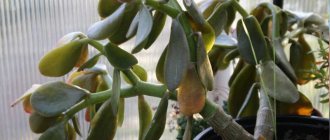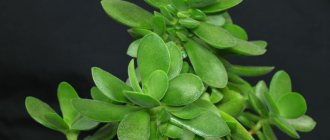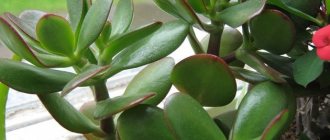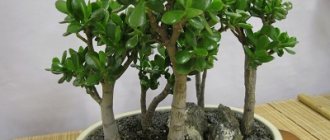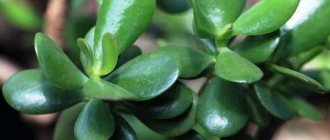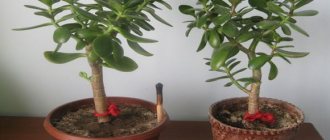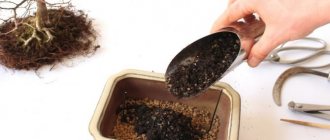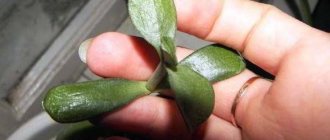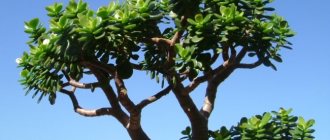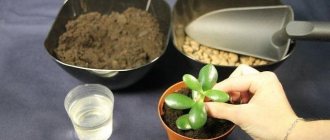Botanical description of the Crassula
Various representatives differ in external characteristics. Almost all plants belong to the category of perennials with monocarpic shoots, the height of which, depending on the species, can vary from a few centimeters to three meters. Foliage is opposite. Many species have simple, entire leaves, collected in a basal rosette.
Small flowers can be white, yellow, reddish or bluish in color. It is important to note that the foliage contains a fairly high amount of arsenic, so using the plant for food purposes is quite dangerous for human health and life.
How and where it grows in natural conditions
Amaranth is the name of a group of 60 different plants in the Amaranthaceae family, but not all are valuable. Some of them are common weeds.
Of the different species commonly grown for food:
- Amaranthus cruenus;
- Amaranthus hypochondriacus;
- Amaranthus caudatus and others.
The plant is very unpretentious and has spread throughout the world. It grows throughout North and South America, as well as in Asia, Africa and Russia.
Amaranth is a so-called pseudocereal. That is, it is not a grain crop such as wheat or oats, but its seeds have a similar set of nutrients and the same method of use in cooking.
Other names for amaranth are amaranth, cat's (fox's) tail, velvet, axamite, cockscomb, beetroot.
The tiny seeds of amaranth are smaller than those of mustard. Up to 200 thousand seeds can ripen in one plant.
Crassula: beneficial and medicinal properties
The medicinal properties and beneficial effects of Crassula on the human body are due to the chemical composition of this plant. The healing properties of indoor culture are manifested in the presence of the following pathologies and diseases:
- plant raw materials in the form of a paste of leaves is an effective external remedy used in the healing of mechanical damage to the skin, and also helps well in getting rid of pimples and acne;
- compresses made from crushed leaves are also very helpful in treating bruises or severe sprains;
- one of the popular names for the money tree is “callus,” so the benefits of indoor crassula in removing old calluses are invaluable;
- to remove a callus from a leaf, you need to remove the thin outer skin and apply it to the callus overnight;
- juice from the leaves of Crassula is useful for many diseases and allows you to relieve attacks of pain due to arthritis and arthrosis, as well as gout;
Planting and care
In the central zone, in the Urals and in the Moscow region, amaranth is grown mainly by seedlings, which is due to the harsh climate . In the southern regions, you can sow seeds directly into open ground. They begin to harvest seedlings in mid-March, when daylight hours are already quite long and artificial additional lighting is not required.
Decorative varieties of amaranth have black seeds.
First, prepare wide but shallow boxes (no more than 10 cm in height). For amaranth, ready-made purchased soil is suitable, but if desired, you can prepare it yourself. To do this, mix garden soil, peat and humus in equal proportions. The main requirement is that the soil mixture be loose, fertile and with a neutral pH. Before sowing, it must be disinfected in any way:
- bake in the oven at 90°C for 30–40 minutes;
- pour boiling water;
- keep in the freezer for 1–2 days;
- pour with a weakly concentrated manganese solution or a special preparation (copper sulfate, colloidal sulfur, any systemic fungicide).
After this, proceed as follows:
- Fill the containers with prepared soil and water it.
- Distribute the seeds evenly over the surface and sprinkle with a layer of earth about 0.5 cm thick.
- The seedlings are sprayed again from a spray device and covered with glass (film) to create a greenhouse effect.
- Mini-greenhouses are located where the temperature does not drop below +22 °C.
Literally after 7–8 days the first shoots hatch. Then the protection is removed. As soon as two true leaves are formed, the plants are picked into separate cups.
Seedlings are planted in separate pots after at least one leaf has formed.
Subsequent care of seedlings consists of regular watering. It is important not to allow the top soil layer to dry out completely. 10–14 days before planting the seedlings in open ground, they begin to harden them: every day they take the boxes out onto the balcony and leave them there first for 15 minutes, then gradually increase the stay time.
Amaranth seedlings are transplanted into the garden when the ground warms up to at least +10 °C. This usually happens at the end of May. For planting, select a well-lit place, since this is a light-loving plant.
Seedlings are planted at a distance of 50 cm from each other in rows with a spacing of 10–15 cm. For planting, choose a cloudy day, since under sun exposure the sprouts do not take root well and may die.
During the first week of its stay in the garden, amaranth grows slowly as the root system grows. During this time, it is necessary to loosen the ridges at least 2 times and remove weeds. Then the growth rate accelerates. In the future, there is no need for weeding, since the plant suppresses weeds. Caring for sprouts during the summer season consists of periodically loosening the soil between the rows and watering. During the growing season, 3-4 feedings are carried out, for which an ash solution or universal mineral compositions are used. Fertilize flowers in the morning after moistening. But it is not recommended to frequently feed amaranth with nitrogen-containing preparations, so that increased foliage growth does not interfere with flowering.
Video: how to plant amaranth in open ground
With the help of the amaranth plant, you can create the main background of a flower garden or add brightness to a green lawn. It is better to plant low-growing varieties on the sides of garden paths and in flowerpots, while tall varieties are suitable for creating hedges. And the main advantage of amaranth is its ability to take root in any conditions.
- Author: Natalya Balakireva
Hello! I'll tell you briefly about myself. I am 42 years old. I have 2 higher educations - technical and economic. Rate this article:
- 5
- 4
- 3
- 2
- 1
(9 votes, average: 4.1 out of 5)
Share with your friends!
Medicinal properties of Crassula (video)
- Juice-based products help relieve swelling from bites of blood-sucking and stinging insects;
- A characteristic feature of Crassula juice is the presence of antiviral activity, which makes it possible to use the product for the treatment of sore throat, as well as dental diseases;
- lubrication with juice helps in the treatment of inflammation, and also effectively relieves colds from the runny nose and herpes;
- polyposis of the nasal mucosa is also quite easily treated by douching with water at room temperature with the addition of juice;
- Crassula juice has pronounced anti-inflammatory properties, which allows the use of medicines based on it in the treatment of hemorrhoids and varicose veins.
It is not difficult to independently prepare a healing external remedy for the treatment of a number of diseases - just follow the following technology:
- mix the juice from a couple of Crassula leaves with a small amount of liquid petroleum jelly, then carefully soak cotton swabs in the mixture and tampon the inflamed hemorrhoids twice a day;
- Treatment of varicose veins, muscle pain of a rheumatic nature and inflammation of the ternary or facial nerve is carried out using compresses.
It is best to moisten compresses and perform rubbing with a specially prepared tincture. For production, crushed raw materials are filled with 40% alcohol and infused for a month in a dark place at room temperature.
Where to buy and how to choose
The season for green amaranth is from mid-summer to autumn. Amaranth seeds can be found year-round in health food stores and large grocery stores.
When purchasing, pay attention to:
- packaging tightness;
- date of manufacture and expiration date;
- seed color – light wheat or with a pinkish tint;
- shell – without dark spots, shiny;
- grains do not stick together and do not appear damp.
You can also always buy amaranth seeds in online stores. Only choose proven resources and well-established manufacturers.
Contraindications for use
Long-term studies of the chemical composition and properties of Crassula have not been carried out, but there is reason to assume that the indoor ornamental plant is characterized by the content of a certain amount of arsenic compounds. Modern official medicine takes into account the extreme toxicity of arsenic , but arsenic was once used in folk medicine as one of the constituents of drugs used in the treatment of intermittent fever and diseases of the nervous system.
Currently, it is the presence of arsenic that is a contraindication and the reason for limiting the internal use of plant materials produced from Crasula. Arsenides, or arsenic compounds, accumulate in the body and cause serious harm to health. People who self-medicate and use money tree-based medicines uncontrollably are especially at risk.
What is amaranth and how is it eaten?
It is a tall plant (usually about 90-130 cm), with wide leaves and bright purple, red or gold flowers. Edible parts:
- Shoots and stems – added to soups and sauces as a herb or cooked with other vegetables.
- Leaves – Can be eaten like spinach.
- Seeds - eaten raw or cooked, made into flour and cereals.
What does amaranth look like?
Amaranth greens vary in color (depending on the variety) - bright green, variegated green-red, with purple veins.
Amaranth seeds are usually creamy white in color, round and small.
They are very similar to quinoa - the same color, shape and texture, but amaranth is smaller in size.
The benefits and harms of the money tree
The magical properties of the tree crassula, bear's ear, crassula, cotyledon or money tree are well known in our country, so the ornamental plant is very popular among domestic flower growers. According to the ancient eastern teachings of Feng Shui, the indoor fat plant is the strongest talisman that activates the flow of wealth into the house. Esotericists regard this decorative crop as a powerful money magnet , and the famous soothsayer Vanga spoke about the beneficial effect of the fat plant on the energy of the house.
Even the appearance of the leaves of this ornamental plant can symbolize cash flows, so if the foliage on the crassula begins to dry out, shreds or falls off, then you can count on a sharp decrease in income, and the thicker the stem part and leaves, the higher the financial well-being of the owner of the indoor flower.
In order for a decorative crop to start “working” and attract money to your home, you need to follow simple rules:
- a flower pot for growing indoor Crassula should be red-brown or greenish-yellow;
- you need to prepare several coins of the same denomination and fill them in before planting;
- The plant should be planted exclusively on the waxing Moon.
You can also decorate the branches and stem part of an ornamental plant with red or golden ribbons, yellow coins, which will increase the magical properties of the ornamental plant.
Application of food amaranth
Not only seeds are used as food, replenishing the deficiency of protein, vitamins and minerals in our body. You can also eat leaves, which have no less impact on our well-being and diversify the diet, since they can be used instead of the same spinach that we have already talked about. Greens can be used as side dishes, as a basis for fresh summer salads, and as one of the ingredients in unusual soups (including cold ones). It can also be recommended as a universal protein supplement.
Products made from amaranth are dietary. In terms of their composition, they are closest to whole milk or protein. Modern manufacturers widely use flour extracted from the seeds of this useful plant. Bakery products and pancakes are baked from it. Cereals are another source of important amino acids, valuable vitamins and microelements. Most often, it is used to cook a hearty porridge.
This herb is incredibly popular abroad. From the grains contained in the panicles growing on a long stem, a variety of tasty and healthy products are prepared that can be recommended to people who are forced to adhere to a diet.
We said above that salads are often made from amaranth leaves. To do this, they need to be washed, cut, seasoned with vegetable oil or low-fat sour cream, salt and pepper. This snack is an excellent source of protein for the body.
Here is another recipe for which we will need:
- 500 g green leaves
- 2 tbsp. olive oil
- clove of garlic
- 1 onion
- Salt
These ingredients can make a delicious and healthy summer dish. Wash the greens and chop them. Place a garlic clove passed through a press into the heated oil. Add finely chopped onion to the dressing. Pour oil over the greens, add salt, mix, and leave covered for 5-10 minutes.
Leaves can be harvested for future use. To do this, they are cut from the stem and sent to a dry, dark place, after which they wait until they dry completely. In this form, the plant is added to the first and second courses.
It should be noted that the beneficial herb itself does not have a distinct taste. It must be combined with other greens and crops.
How to care for a fat woman (video)
According to lovers of indoor ornamental plants, in shock conditions, for example, if a flower is not watered for a long time and then subjected to sufficiently abundant irrigation measures, the money tree blooms. The flowering is not very attractive, but according to legend, it promises a lot of positive things in the life of a gardener. In order to have money at home, you need to grow the crassula yourself by picking a leaf and rooting it in nutritious soil. It is important to note that the larger the flower pot, the faster the money tree grows, and therefore, the higher the financial well-being of the owner of this extraordinary ornamental plant.
How and how much to store
Fresh amaranth greens spoil very quickly. It can be stored for 3-4 days in the vegetable compartment of the refrigerator, wrapped in damp paper towels.
Amaranth seeds are best stored in a tightly sealed container (preferably a glass jar) in a cool, dark, dry place.
Don't keep them in a cupboard near the stove, oven, or dishwasher. The heat from these appliances will significantly shorten the shelf life. You can put the jar in the refrigerator to prevent the seeds from going rancid. The shelf life of amaranth grains when properly stored is up to one year.
Amaranth flour quickly goes rancid. To preserve it longer, it is best to keep the sealed package in the freezer. The shelf life of amaranth flour under such storage conditions is up to 6 months.
Amaranth - pharmacological properties
Pharmacologists and doctors consider pharmacological preparations based on the active components that make up amaranth to be an effective natural remedy for the prevention and treatment of diseases. Today, medical preparations containing amaranth:
- Rectal-vaginal suppositories with oil extract of amaranth seed. Indicated for fungal and infectious diseases of the vagina or rectum, hemorrhoids, anal fissures, ulcers, proctitis, urethritis.
- Ointments and balms used for diseases of joints and muscle tissue. Contains a complex of plant components, including amaranth. Increases blood circulation and normalizes metabolic processes in the periarticular and muscle areas. Prescribed for arthritis, arthrosis, osteochondrosis, for physical damage to joints and periarticular muscles and ligaments.
- Gels and tablets are used to treat the skin disease vitiligo, as well as after burns and other skin damage. These preparations use the active component squalene based on amaranth.
- Tablets based on amaranth seed with the addition of succinic and nicotinic acids. Used for the prevention and treatment of cardiovascular diseases.
- Drugs that lower the level of low-density lipoproteins, i.e. cholesterol. Amaranth oil extract is the basis of the drug.
- BIO supplements are biologically active preparations, the main active ingredient of which is amaranth oil. The drug is effective only with a corrective diet.
- Preparations with squalene, the active component of amaranth, in capsules, are used for the prevention and complex therapy of various diseases, for recovery after serious illnesses and operations.
Is Crassula Dangerous for Cats?
The money tree, which is so useful to people, will not bring any good to the smaller brothers; rather, on the contrary: the habit of biting the leaves of indoor plants will result in poisoning. If the plant juice enters the animal’s digestive system, even in small quantities, vomiting, loss of coordination, slow heart rate (bradycardia) and even depression may occur.
To keep your cat away from the fat cat, you need to place lemon or orange peels on the windowsill. You can also add drops of citrus essential oil to the plant pot.
Crassula in the house
The plant is beneficial by its very presence.
The main thing is that children and pets do not get to it. Benefits of having Crassula in the house:
- enriches the surrounding space with oxygen;
- neutralizes unpleasant odors;
- kills pathogenic bacteria in the air;
- promotes light and pleasant sleep - the plant can be kept in the bedroom;
- increases performance;
- has a positive effect on mood.
The room in which the fat plant stands should have moderate temperature and humidity. Although this plant is hardy, it requires certain maintenance conditions.
Money tree requirements for growing conditions:
- dust, drafts, and temperature changes are contraindicated for the plant;
- recommended temperature - +19…+24°С;
- You cannot place the plant in a dry room, near radiators, fireplaces; the best place is near an aquarium or in the bathroom;
- Direct sunlight should not fall on the plant, especially in summer - heat negatively affects development.
Crassula is often called a natural filter for its ability to purify the air and absorb odors.
Chemical composition
People began to use crassula as a medicinal plant a long time ago.
After a detailed chemical analysis, arsenic salts were found in the leaves of the plant - they are also called arsenides. The peculiarity of these compounds is their accumulation in bone tissue. There is little arsenic in Crassula, so if the plant is used correctly, poisoning in adults is not observed. In addition to arsenic, the money tree contains volatile compounds - phytoncides and flavonoids.
The effect of phytoncides and flavonoids on the body:
- antioxidant effect;
- antibacterial effect;
- suppression of oxidative processes (stimulates immunity);
- rejuvenation of the body;
- promotes wound healing.
Precautionary measures
To prevent the use of Crassula for medicinal purposes from causing health problems, it is important to take certain precautions.
How to prevent possible harm to the Crassula:
- use - up to 2 weeks, after this period the accumulation of poisons in the body begins;
- observe all contraindications;
- be sure to consult a doctor and obtain permission to use the plant for treatment;
- check the body's reaction to an allergic reaction;
- start treatment with micro doses.
To check the body's reaction to the fat plant, run a freshly picked leaf - the tearing point - over the skin in the area of the elbow. If no reactions occur, it means there is no allergy to the plant.
Benefits for women
Consumption of amaranth slows down the aging process and has a beneficial effect on the skin, hair, and nails.
Thanks to quick saturation, a person does not overeat and, as a result, does not gain extra pounds.
Amaranth oil has an anti-inflammatory effect and is recommended for painful periods and menopause.
Amaranth contains all the enzymes necessary for the development of the fetus, so gynecologists recommend that pregnant women include it in their diet. It helps cope with depression, prevents the appearance of varicose veins, and improves metabolic processes.

